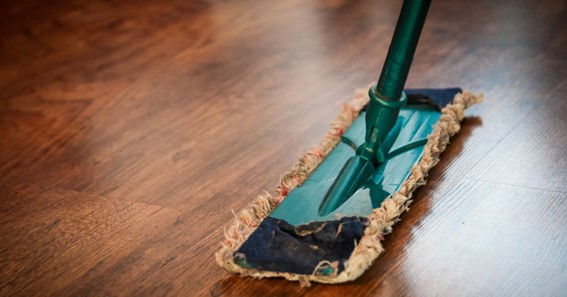Disinfecting your bathroom is a great way to keep your bathroom free of germs and bacteria. This is especially true if you use a disinfectant spray to do it. However, there are some things you should be aware of before you begin.
Quaternary ammonium compounds
Quaternary ammonium compounds (which you can read about here) are a large class of chemicals with important public health and hygiene applications. They are used as disinfectants to clean high-touch surfaces. These quaternary ammonium compounds are also fungicidal and veridical, meaning they kill and control viruses, bacteria, and fungi.
QACs are soluble in water, alcohol, and alkali, and they are compatible with cationic surfactants. There are several different subclasses of quaternary ammonium compounds. For example, the first generation is benzalkonium chloride, while the fourth generation is quaternary linear alkyl chains without a benzene ring.
The fifth generation is a mixture of the fourth and second generation antiseptics. A typical household cleaning product contains 0.1 to 1% quaternary ammonium compounds. The chemical is a fungicidal, veridical, and bactericidal agent, and it has a low contact time.
Click here – How The Short Hair Wigs For Sale Are Millennium Fab On Fashion Showcases
QACs were initially synthesized about 100 years ago, and their use began soon after World War II.
Today, they are widely used in disinfectants and consumer products. In addition, there is a wide range of public health and safety research to consider when using quaternary ammonium compounds for office cleaning. Various regulatory agencies have reviewed the safety of quaternary ammonium compounds worldwide.
They are generally considered as disinfectants when their concentrations reach 0.25% to 1.6%. However, they are also used to disinfect industrial processes, food-processing facilities, and hospitals. As with other disinfectants, there are respiratory health concerns associated with the use of quaternary ammonium compounds.
It has been found that exposure to sodium hypochlorite, the most common disinfectant ingredient, is related to respiratory illness. Further, hydrogen peroxide is a potential respiratory irritant. Nevertheless, these risks can be minimized through careful use and limited bioavailability.
A recent study evaluated the airborne concentrations of a variety of quaternary ammonium compounds in a residential bathroom environment. TVOC concentrations were determined by applying the cleaning product in various methods, including wiping, streaming, and spraying.
Results showed that cleaning with a quats-based product produced twice the amount of VOC exposures as the other products. Moreover, air contaminants remained present throughout the cleaning session.
This study suggests that future studies of quats-based products should include measurements of specific quaternary ammonium compounds in time-integrated ways. Ultimately, these studies can provide a more detailed understanding of the respiratory hazards associated with the use of these materials in household and industrial environments.
Click here – Top Mobile App UI/UX Design Trends To Watch Out For In 2023
Mop and bucket
A mop and bucket for disinfecting bathrooms is a very useful item to have. They not only help you keep your home clean, but they also enhance the occupant’s well-being.
There are many types of mop buckets on the market. Some are very simple, while others have several features. It is important to select the right one for your needs. This will prevent injuries, minimize cross-contamination, and save water. A mop with a swivel head is very useful. The swivel allows the mop to move into tight corners and clean out crevices.
For a more thorough cleaning, you may want to consider a dual-cavity mop bucket. These are great for commercial kitchens, restrooms, and other areas that handle a lot of soil. Using a mop and bucket for disinfecting bathrooms helps avoid re-depositing soils, which is critical for maintaining cleanliness.
Another option is to purchase a dedicated dust mop. Unlike a regular mop, a dust mop head is specifically designed to clear dust. With this accessory, you can remove the dust without having to worry about getting dirty. You should make sure you choose a bucket that can hold enough water.
Spraying, streaming, and wiping
If you want to reduce the chances of disease-causing pathogens spreading to other areas, you need to regularly disinfect your bathroom. You can do this by using a sanitizing product with disinfectant ingredients. Choosing one that is registered with the EPA is a good idea.
One of the best ways to disinfect your bathrooms is to use a spray and wipe (https://www.goodhousekeeping.com/home/cleaning/g31292850/how-to-clean-bathroom/). However, you should be careful with these methods. They are not effective against COVID-19 infections, and some people may experience undesirable side effects if they drink the solution. Therefore, you should only follow the package label instructions when using these products.
If you are looking for a natural cleaner, you may be surprised to learn that there are a number of options available. Some popular brands include Seventh Generation and Clorox Green Works. Natural cleanser products often do not contain chemical additives, which is a great way to protect the environment.
Whether you are cleaning your bathroom or another part of your home, you should be careful to read the product’s label. Some products are formulated to be applied to hard surfaces, while others are designed for soft surfaces. For example, if you want to clean stainless steel counters, you should not mix bleach with a strong cleaner.
It is also a good idea to use the sanitizer solution only when it is intended to be used, and you should not use it to sanitize your body. Another alternative to a spray and wipe method is to use wet misting. This technique will allow you to avoid splattering and wiping on small, hard to reach areas. The misting method will also allow you to more thoroughly cover your surface.

